Vermont Curry is a beloved Japanese curry mix known for its mild, sweet flavor, made with apples and honey. It offers a convenient, delicious meal solution.
Overview of Vermont Curry
Vermont Curry is a beloved Japanese curry brand known for its rich, creamy texture and mild flavor profile. It is a pre-made curry roux mix that simplifies the cooking process, making it accessible for home cooks. The curry is characterized by its balanced blend of spices, creating a savory and slightly sweet taste that appeals to a wide range of palates. Vermont Curry has become a household name in Japan and beyond, offering a convenient yet flavorful way to enjoy authentic Japanese curry dishes. Its popularity stems from its ease of preparation and the hearty, comforting meals it helps create.
Importance of Following Instructions
Following the instructions for making Vermont Curry is crucial to achieving the best flavor and texture. Proper measurements ensure the curry’s consistency isn’t too thick or too watery, while correct cooking times prevent undercooked or burnt elements. Skipping steps or ignoring ratios can lead to an imbalanced taste or uneven texture. By adhering to the guide, you avoid common mistakes like insufficient simmering or incorrect roux melting. This ensures the flavors meld properly, creating a rich, aromatic dish. Deviating from instructions risks compromising the dish’s quality, making it less enjoyable. Attention to detail guarantees a satisfying and delicious meal every time. Consistency is key to mastering Vermont Curry.

Ingredients Required for Vermont Curry
Vermont Curry requires a curry roux block, your choice of meat (beef, pork, or chicken), onions, potatoes, carrots, oil, and water; Optional additions include extra vegetables or spices for customization.
Curry Roux Block
The curry roux block is a pre-packaged mixture of flour, oil, and spices that serves as the foundation of Vermont Curry. It provides the rich, savory flavor and thickens the dish. Sold in compact blocks, it’s designed for convenience, eliminating the need to make roux from scratch. Simply cut and melt it in the pan to infuse the curry with its signature taste. Properly stored in a cool, dry place or refrigerated, the roux block retains its quality. For larger batches, multiple blocks can be used, ensuring consistency in flavor and texture. This essential ingredient streamlines the cooking process, making it accessible to all skill levels.
Meat Options (Beef, Pork, Chicken)
Vermont Curry is versatile, allowing you to choose from beef, pork, or chicken for a delicious meal. Beef is a popular choice, offering a hearty texture when sliced thinly or cubed. Pork, especially loin or belly, adds rich, tender bites. Chicken, whether breast or thigh, provides lean protein and absorbs flavors well. Each meat enhances the curry’s depth, making it adaptable to preferences. Browning the meat before adding vegetables ensures a robust base flavor. Regardless of the choice, the meat becomes tender and infused with the curry’s spices during simmering. This step is essential for a satisfying and flavorful dish.
Vegetables (Onions, Potatoes, Carrots)
Onions, potatoes, and carrots are essential vegetables in Vermont Curry, adding natural sweetness and texture. Onions are typically finely chopped to caramelize during cooking, enhancing the dish’s depth. Potatoes and carrots are cubed or sliced thinly to ensure they cook evenly and become tender. These vegetables balance the savory flavors of the curry roux and meat. Proper preparation involves peeling and cutting them uniformly for consistent cooking. During simmering, they absorb the curry’s spices, creating a harmonious blend of flavors. These vegetables are fundamental to achieving the hearty, comforting nature of Vermont Curry. Their inclusion ensures a well-rounded and satisfying meal.
Oil and Water
Oil and water are critical components in preparing Vermont Curry, ensuring a smooth and flavorful base. A small amount of oil, such as vegetable or canola, is used to sauté meat and vegetables, preventing sticking and enhancing aromas. Water is added in a specific ratio, typically five parts water to one part curry roux, to create the curry sauce. Using the right amount of water is essential to achieve the desired consistency—too little may result in a thick, overpowering curry, while too much can make it overly diluted. Adjusting the water ratio allows for personal preference in texture and flavor;
Additional Ingredients (Optional)
To enhance the flavor and texture of your Vermont Curry, consider adding optional ingredients. Grated cheese, such as cheddar or mozzarella, can be stirred in during the simmering process for a creamy twist. Coconut milk is another popular addition, offering a tropical and rich undertone. For extra heat, diced jalapeños or red pepper flakes can be included. Fresh herbs like parsley or cilantro add a fresh finish when sprinkled on top before serving. Some cooks also experiment with a splash of soy sauce or sake for depth. These optional additions allow you to tailor the curry to your taste preferences, making it uniquely yours. Experimentation is encouraged!
Step-by-Step Cooking Instructions
Follow a detailed sequence to prepare Vermont Curry, ensuring each step builds flavor and texture, from sautéing to simmering, for a delicious and satisfying meal.
Preparation of Ingredients
To prepare for Vermont Curry, start by cutting the protein of your choice—beef, pork, or chicken—into bite-sized pieces. Peel and dice onions, potatoes, and carrots into uniform sizes for even cooking. Measure out the curry roux block according to the package instructions. Heat a pan with a small amount of oil to prevent sticking. Optionally, chop additional vegetables like green beans or mushrooms for added texture. Ensure all ingredients are ready before starting the cooking process to maintain a smooth workflow. Proper preparation ensures flavors meld evenly and the dish cooks consistently, resulting in a rich and satisfying curry experience.
Sautéing Meat and Vegetables
Heat a large pan over medium heat and add a tablespoon of oil. Once the oil is hot, add the prepared meat and cook until lightly browned. Remove the meat from the pan and set it aside. Next, add the diced onions and sauté until translucent. Add the potatoes and carrots, stirring occasionally to ensure even cooking. Cook the vegetables for about 5 minutes, or until they start to soften. Return the meat to the pan and mix well with the vegetables. This step enhances the flavor base of the curry, ensuring a rich and savory profile for the dish.
Adding Water and Bringing to a Boil
After sautéing the meat and vegetables, carefully pour in 400ml of water while stirring to prevent splashing. Ensure the water covers the ingredients evenly. Bring the mixture to a rolling boil over medium-high heat. This step is crucial as it helps distribute the flavors evenly and prepares the base for the curry roux. Once boiling, reduce the heat slightly to maintain a steady simmer. Avoid adding too much water, as this can dilute the curry’s richness. The boiling process ensures the ingredients meld together, creating a flavorful foundation for the curry. Properly balancing the liquid is key to achieving the desired consistency.
Melting the Curry Roux
Melting the curry roux is a pivotal step in achieving a rich, velvety texture. Break the roux block into smaller pieces and gradually add them to the boiling mixture while continuously stirring. Reduce the heat to medium-low to prevent burning. Stir gently but thoroughly, ensuring the roux dissolves evenly into the liquid. Avoid adding the roux too quickly, as this can cause lumps. Once fully incorporated, the mixture will thicken, and the curry will develop its signature flavor and aroma. Proper melting ensures a smooth, even consistency, which is essential for the dish’s appeal. Monitor the heat to maintain a gentle simmer during this process.
Simmering the Curry
Once the curry roux is fully melted, reduce the heat to low and allow the mixture to simmer gently for 10–15 minutes. Stir occasionally to prevent sticking and ensure even cooking. This step is crucial for developing the curry’s deep flavor and thickening it to perfection. Avoid boiling vigorously, as it can cause the curry to burn or become too thick. If the curry becomes too thick, add a small amount of hot water to adjust the consistency. Simmering allows the flavors to meld together, resulting in a smooth, aromatic, and deliciously balanced curry. Patience during this step is key to achieving the best results.
Serving Suggestions
Vermont Curry is traditionally served hot over a bed of steamed Japanese rice for a comforting meal. For added flavor, garnish with furikake or pickled ginger. Pair it with miso soup and a side salad for a balanced Japanese-inspired dinner. To modernize, try serving with a side of crusty bread or naan for dipping in the rich curry sauce. For extra texture, top with toasted sesame seeds, chopped green onions, or a soft-boiled egg. Experiment with sides like roasted vegetables or edamame for a hearty and satisfying meal. Let your creativity shine by tailoring the dish to your taste preferences or dietary needs.
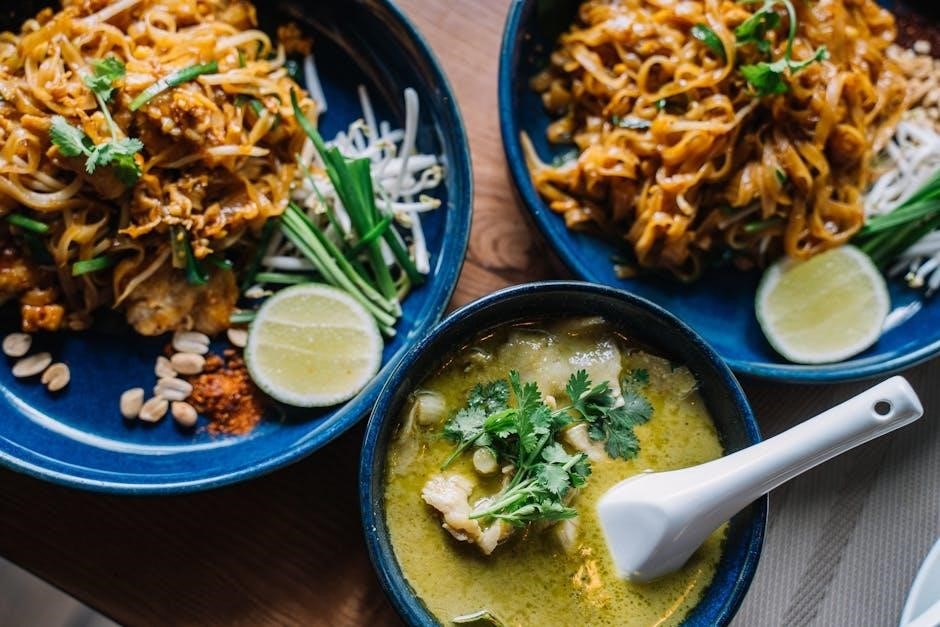
Customization Tips
Adjust spice levels with red pepper or cayenne, add extra vegetables like peas or mushrooms, or incorporate proteins like tofu or seafood for variety. Personalize to taste!
Adjusting Spice Levels
To customize Vermont Curry’s spice level, start by adding red pepper flakes or cayenne pepper for extra heat. For a milder version, use only part of the curry roux or add a splash of milk or cream to neutralize the spiciness. Fresh chili slices can enhance flavor without overwhelming heat. Experiment with gradual additions, tasting as you go, to achieve your desired spice level. Balancing spice with dairy or optional ingredients like cheese ensures a rich, tailored flavor profile. This flexibility allows you to enjoy Vermont Curry ranging from mild to bold, catering to diverse preferences and dietary needs. Adjustments are easy and fun!
Adding Extra Vegetables
Enhance your Vermont Curry by incorporating extra vegetables for added texture and nutrition. Bell peppers, green beans, or mushrooms are excellent choices. Chop them into bite-sized pieces and sauté alongside onions and meat for uniform flavor. Harder vegetables like zucchini or snap peas can be added during the simmering phase. This step allows them to cook thoroughly without becoming mushy. Experiment with different combinations to personalize the dish. Ensure vegetables are evenly distributed and adjust seasoning if needed. Adding extra vegetables not only boosts flavor but also makes the curry heartier and more satisfying, catering to varied tastes and dietary preferences effortlessly.
Combining with Other Curry Brands
Combining Vermont Curry with other curry brands can create a unique flavor experience. Start by using Vermont Curry as the base, then gradually incorporate a second brand to enhance depth. For instance, mixing with a spicier curry can add a bold twist, while blending with a milder one maintains a subtle taste. Adjust the ratio according to personal preference, ensuring the overall consistency remains smooth. Be cautious not to overpower the dish, as differing spice levels and seasoning blends can clash. Experiment with small batches to achieve the desired balance, allowing each curry’s distinct characteristics to shine without overwhelming the palate. This method offers versatility for adventurous cooks seeking customization. Always taste as you go and fine-tune seasonings for harmony. Combining curries opens up endless possibilities for flavor innovation, making each meal distinctive and tailored to individual tastes. By thoughtfully blending, you can craft a curry that’s both familiar and exciting, perfect for those eager to explore new culinary horizons. This approach not only broadens your repertoire but also ensures that every batch of curry is a delightful surprise, keeping meals fresh and engaging. Whether you prefer a mild blend or a spicy fusion, combining curry brands with Vermont Curry offers endless opportunities for creativity in the kitchen. So, don’t hesitate to mix and match—your taste buds will thank you for the adventure!
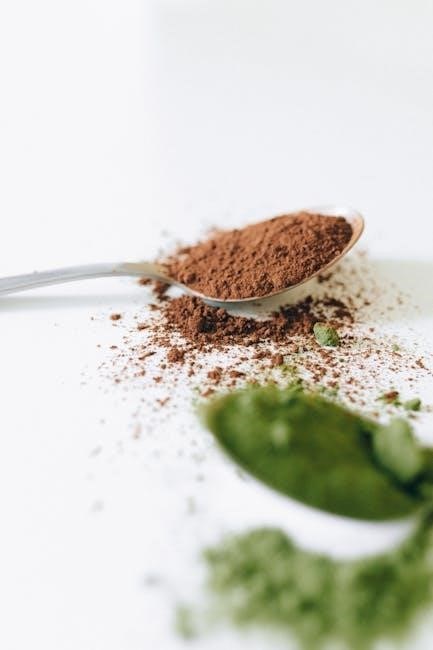
Nutritional Information
Vermont Curry is a balanced meal option, offering approximately 250-300 calories per serving, with 10-12g of protein, 30-35g of carbs, and 10-12g of fat, making it a nutritious choice.
Calories and Macronutrients
A single serving of Vermont Curry typically contains around 250-350 calories, depending on portion size and ingredients. It provides a balanced mix of macronutrients, with approximately 25-30g of carbohydrates, 12-15g of protein, and 10-12g of fat. The curry roux contributes to the fat content, while vegetables and meat add natural sugars, fiber, and lean proteins. This dish is a wholesome option, offering sustained energy and satisfying hunger without excessive calorie intake. Pairing it with rice or bread can increase calorie content, making it a versatile meal for various dietary needs.
Health Considerations
Vermont Curry is a nutrient-rich dish, combining vegetables, protein, and whole grains, making it a balanced meal option. The inclusion of vegetables like onions, carrots, and potatoes provides essential vitamins, minerals, and fiber. Lean meats or plant-based proteins add quality protein without excessive saturated fats. However, the curry roux may contain sodium and preservatives, so moderation is key. For healthier options, use low-sodium broth or reduce the roux amount. Pairing the curry with brown rice or whole-grain bread enhances its nutritional value. Portion control and mindful ingredient selection can make this dish suitable for various dietary preferences and health goals.

Common Mistakes to Avoid
Common mistakes include incorrect water ratios, burning the roux, or insufficient simmering. These errors can ruin texture and flavor. Follow instructions carefully to achieve perfection.
- Incorrect water ratio
- Burning the roux
- Insufficient simmering time
Incorrect Water Ratio
Using the wrong water ratio is a common mistake when preparing Vermont Curry. The package typically recommends a specific water measurement to achieve the perfect consistency. Adding too much water can result in a diluted, flavorless curry, while too little may make it overly thick. To avoid this, measure water accurately according to the instructions. Gradually add water while stirring to maintain control over the texture. Ensuring the right balance enhances the curry’s rich, savory flavor and prevents an unappetizing consistency. Always refer to the packaging for precise measurements to guarantee a delicious outcome.
- Measure water as instructed.
- Add water gradually for better control.
- Avoid over- or under-dilution.
Burning the Roux
Burning the curry roux is a common mistake that can ruin the dish’s flavor. The roux is sensitive to heat and requires gentle cooking. When melting the roux, use low heat and stir constantly to prevent it from sticking to the pan. If the roux burns, it will have a bitter taste and an unappealing texture. To avoid this, monitor the heat closely and ensure the roux dissolves smoothly into the liquid. If burning occurs, discard the mixture and start over. Proper attention during this step ensures a rich, aromatic curry. Always prioritize gentle heat and constant stirring.
- Use low heat to prevent burning.
- Stir constantly while melting the roux.
- Discard and restart if burning occurs.
Insufficient Simmering Time
Insufficient simmering time can result in a curry that lacks depth and richness. Simmering allows the flavors to meld together and the sauce to thicken properly. If the curry isn’t simmered long enough, the spices won’t fully infuse, and the texture may remain watery. To avoid this, simmer the curry on low heat for at least 15-20 minutes after adding the roux. Stir occasionally to prevent sticking and ensure even cooking. Proper simmering enhances the overall flavor profile and achieves the desired consistency. Patience is key to achieving a delicious, restaurant-quality Vermont curry.
- Simmer for 15-20 minutes after adding roux.
- Stir occasionally to prevent sticking.
- Check consistency before serving.
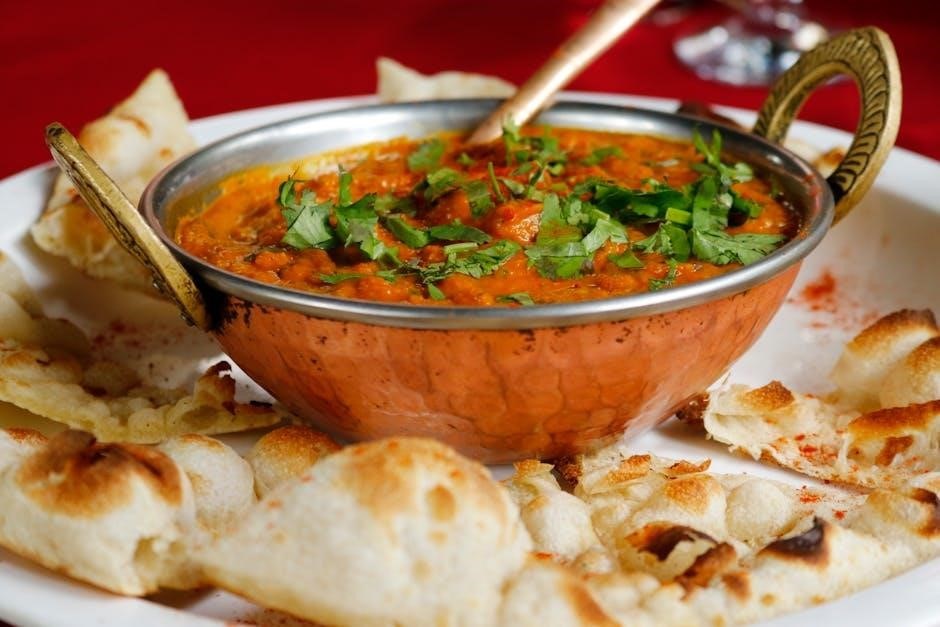
Storing and Reheating
Store cooled Vermont curry in an airtight container in the fridge for up to 3 days or freeze for 2 months. Reheat gently over low heat, adding water if needed to adjust consistency. Avoid overheating, as it may thicken excessively.
- Fridge: 3 days in airtight container.
- Freezer: 2 months, thaw before reheating.
- Reheat slowly to maintain texture.
Proper Storage Techniques
To maintain the quality of Vermont curry, proper storage is essential. Always cool the curry to room temperature before refrigerating or freezing to prevent moisture buildup and spoilage. Use an airtight, food-grade container to store the curry, ensuring it is tightly sealed. For refrigeration, the curry can be kept for up to 3 days. For longer storage, transfer the curry to a freezer-safe container or ziplock bag, removing as much air as possible before sealing. Frozen curry will last up to 2 months. Label containers with dates for easy tracking. Avoid using metal containers, as the acidity in the curry may react with the material. Proper storage helps preserve flavor and texture for future enjoyment.
Reheating Methods
To reheat Vermont curry, start by portioning it into a microwave-safe bowl. Add a splash of water to maintain moisture and cover with a lid or plastic wrap. Heat on medium power in 30-second intervals, stirring between each interval, until warmed through. For stovetop reheating, place the curry in a saucepan, add a little water or broth, and heat over low to medium heat, stirring occasionally, until steaming hot. For oven reheating, preheat to 300°F (150°C), place the curry in an oven-safe dish, cover with foil, and reheat for 15-20 minutes. Ensure the curry reaches 165°F (75°C) for food safety. Avoid overheating, as it can thicken excessively or lose flavor; If frozen, thaw overnight in the fridge before reheating for even results.
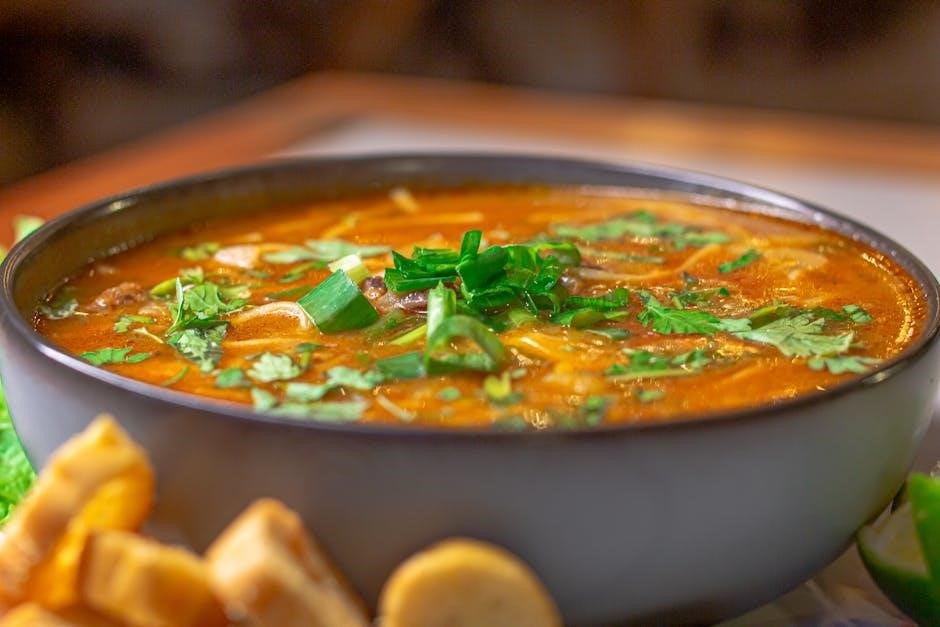
Serving Suggestions
Serve Vermont curry over a bed of steamed rice for a traditional experience. Garnish with green onions, sesame seeds, or a dollop of pickled relish for added flavor. Pair with Japanese pickles or a side salad for a balanced meal. For a modern twist, try serving with crusty bread or naan to soak up the rich curry sauce.
Traditional Pairings
Pair Vermont curry with steamed Japanese rice for an authentic experience. Serve alongside miso soup and pickled vegetables to balance flavors. Include steamed edamame or boiled soybeans for added protein. For a classic Japanese meal, accompany with grilled or fried chicken karaage. Japanese-style pickles, such as takuan or cucumbers, add a refreshing contrast. Optionally, serve with seaweed salad or cucumber sunomono for a light, crisp complement. These traditional pairings enhance the rich, savory flavor of Vermont curry, creating a well-rounded and satisfying meal. Each element contributes to a harmonious and authentic Japanese-inspired dining experience.
Modern Twists
Give Vermont curry a contemporary flair by pairing it with unique sides or incorporating modern flavors. Try serving it over cauliflower rice for a low-carb option or mixing in roasted vegetables for added depth. Add a fusion twist by combining it with crispy tortilla strips or spicy kimchi. For a gourmet touch, top with seared scallops or poached eggs. Experiment with plant-based proteins like tofu or tempeh for a vegetarian version. Incorporate global spices, such as cumin or smoked paprika, for a bold twist. These modern interpretations allow you to enjoy Vermont curry in innovative and exciting ways while maintaining its signature flavor.
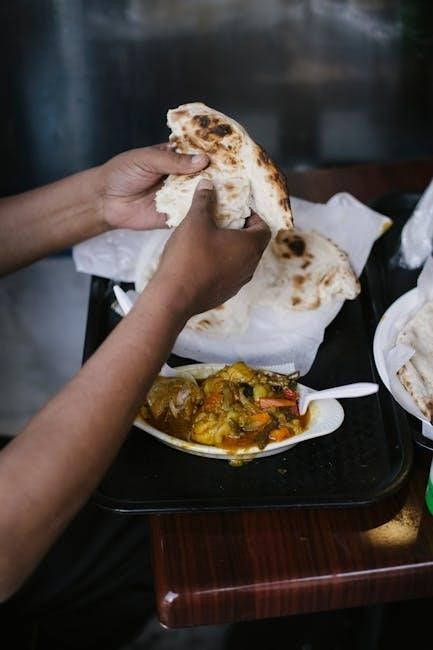
Optional Enhancements
Elevate your Vermont curry with fresh herbs like cilantro or parsley for a bright finish, or drizzle with truffle oil for a luxurious touch. Add a squeeze of fresh lime juice or a splash of coconut milk for a creamy, tropical twist. For extra texture, sprinkle toasted sesame seeds or crushed nuts on top. These optional enhancements allow you to personalize your dish and explore new flavor dimensions while keeping the curry’s signature taste intact.
Adding Cheese
Enhance your Vermont curry with melted cheese for a creamy, indulgent twist. Popular choices include cheddar, mozzarella, or gouda, each offering a unique flavor profile. Sprinkle shredded cheese toward the end of simmering to ensure it melts evenly without burning. For an extra-decadent touch, mix in cream cheese or mascarpone for a richer texture. Cheese complements the savory curry flavors and adds depth. Optional additions like crispy bacon bits or chopped herbs can further elevate the dish. This optional enhancement transforms the curry into a hearty, comforting meal perfect for special occasions or cozy dinners. Experiment with different cheeses to find your ideal combination.
Incorporating Other Proteins
Expand your Vermont curry by adding diverse proteins for extra flavor and texture. Shrimp, tofu, or fish are excellent alternatives to traditional meats. For shrimp, add them toward the end of cooking to prevent overcooking. Tofu can be marinated beforehand for enhanced taste and stirred in during simmering. Fish, such as cod or salmon, should be added gently to avoid breaking apart. These proteins complement the curry’s rich flavors and cater to dietary preferences. Experiment with combinations, like shrimp and chicken, for a hearty mix. This versatility makes Vermont curry adaptable to various tastes and dietary needs, ensuring a satisfying meal for everyone. Try these options to diversify your recipe.
Spice Adjustments
Personalize your Vermont curry by tweaking the spice levels to suit your taste. For a milder flavor, reduce the amount of curry roux or add it gradually. To enhance heat, incorporate red pepper flakes or fresh chili. For depth, add a pinch of cumin, turmeric, or a dash of cinnamon. Garlic and ginger can also be sautéed initially for an aromatic base. Optional additions like paprika or cardamom offer unique flavor dimensions. Adjustments allow you to balance sweetness, spiciness, and savory notes, making the dish truly customizable. Experiment with these spices to create a curry that reflects your palate preferences perfectly. This ensures a delightful and personalized meal every time.

Historical Context
Vermont Curry originated in Japan in 1969, founded by Kiyoshi Ichihara. It became a beloved brand known for its rich, savory flavor, fitting well into Japanese home cooking.
Origin of Vermont Curry
Vermont Curry was first introduced in Japan in 1969 by House Foods Corporation. It revolutionized home cooking by offering a convenient, pre-made curry roux block. Kiyoshi Ichihara, the founder, aimed to simplify curry preparation while maintaining rich, authentic flavor. The name “Vermont” reflects the brand’s aspiration to evoke a sense of natural, wholesome ingredients. Its popularity grew rapidly, becoming a staple in Japanese kitchens. The curry’s mild yet aromatic taste appealed to a wide audience, making it a favorite for family meals. Over the years, Vermont Curry has maintained its reputation as a trusted and delicious choice for home cooks.

Cultural Impact in Japan
Vermont Curry has become a cultural phenomenon in Japan, deeply ingrained in daily life. Its introduction in 1969 revolutionized home cooking, making curry accessible to everyone. It quickly became a staple in Japanese households, often served at family dinners and social gatherings. The brand’s iconic TV commercials and catchy jingles further cemented its place in pop culture. Vermont Curry is not just a food product but a cultural icon, symbolizing convenience and warmth. Its influence extends beyond kitchens, with restaurants incorporating it into menus and chefs creating unique variations. For many, it evokes nostalgic memories, making it a cherished part of Japan’s culinary identity.
Vermont Curry is a simple yet flavorful dish that brings warmth to any meal. By following these steps, you can create a delicious, authentic Japanese curry. Happy cooking!
Preparing Vermont Curry involves sautéing meat and vegetables, then adding water and the curry roux. Simmer until thickened, and serve hot. This method ensures a flavorful, authentic Japanese curry experience. Key steps include proper ingredient preparation, careful roux melting, and adequate simmering time. Following these instructions guarantees a rich, aromatic dish. Adjustments for spice levels or added ingredients can tailor the curry to personal preferences. Proper storage and reheating techniques maintain its quality. By adhering to these steps, anyone can enjoy a delicious, homemade Vermont Curry with ease.
Final Tips for Success
To ensure the best results when making Vermont Curry, always use fresh and high-quality ingredients for optimal flavor. Opt for fresh vegetables and choose your preferred protein for a more satisfying dish. Properly toasting the curry roux enhances its aroma and depth. Avoid rushing the simmering process, as it allows the flavors to meld beautifully. For extra richness, add a splash of milk or coconut milk towards the end. Experiment with spices or herbs to tailor the taste to your preference. Serve hot with steamed rice or crusty bread for a hearty meal. Enjoy your delicious homemade Vermont Curry!
